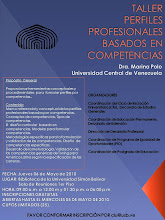
Chile's higher education: between market and state
JOSE JOAQUIN BRUNNER FLASCO,
Leopoldo Urrutia 1950, Casilla 3213, Correo Central, Santiago, Chile
Leopoldo Urrutia 1950, Casilla 3213, Correo Central, Santiago, Chile
Presently, most Higher Education policy issues that are debated in Chilean society revolve around the question of the type of relations that should connect the Higher Education system with the state and society. During the 1980-1990 period, Chilean Higher Education underwent drastic changes under a Military Government, directed to the achieving of three main goals: to open-up the Higher Education system, to differentiate its institutional structures, and to partially transfer the cost of state-financed institutions to the students and/or their families (cost recovery) thus forcing these institutions to diversify their funding sources. As a result of the 1980 reforms, both the institutional composition and the financing of Higher Pducation experienced dramatic changes. New establishments mushroomed. In turn, the rapid increase in the number of institutions resulted in three major effects: first, Higher Education became private- dominant in the non-university levels and has now a dual public/private nature at the university level; second, establishments grew more regionally dispersed but overall enrolment distribution changed in the direction of a still higher concentration in the capital city; third, creation of new entrance opportunities shows an increasing over-extension with respect to enrolment demand. Also funding of Higher Education was drastically altered by the 1980 reforms. Incremental funding was replaced by a diversified funding system which contemplates the employment of four different mechanisms: public institutional core funding, competitive public allocations rewarding institutions that enrol the best students, a Government financed student-loan scheme, and competitive financing of research projects. A new, democratically elected Government was established in 1990. Its Higher Education policies include three major objectives: to fully restore institutional autonomy cancelling all measures of governmental intervention and reinstating the right of faculty members to freely choose their authorities and provide for the self-government of public universities; to increase public spending without changing the diversified-funding approach adopted by the former Government, and to change the legal framework of Higher Education with the aim of introducing more stringent accreditation and evaluation procedures and institutional accountability.

Descargar

.png)

0 comentarios:
Publicar un comentario